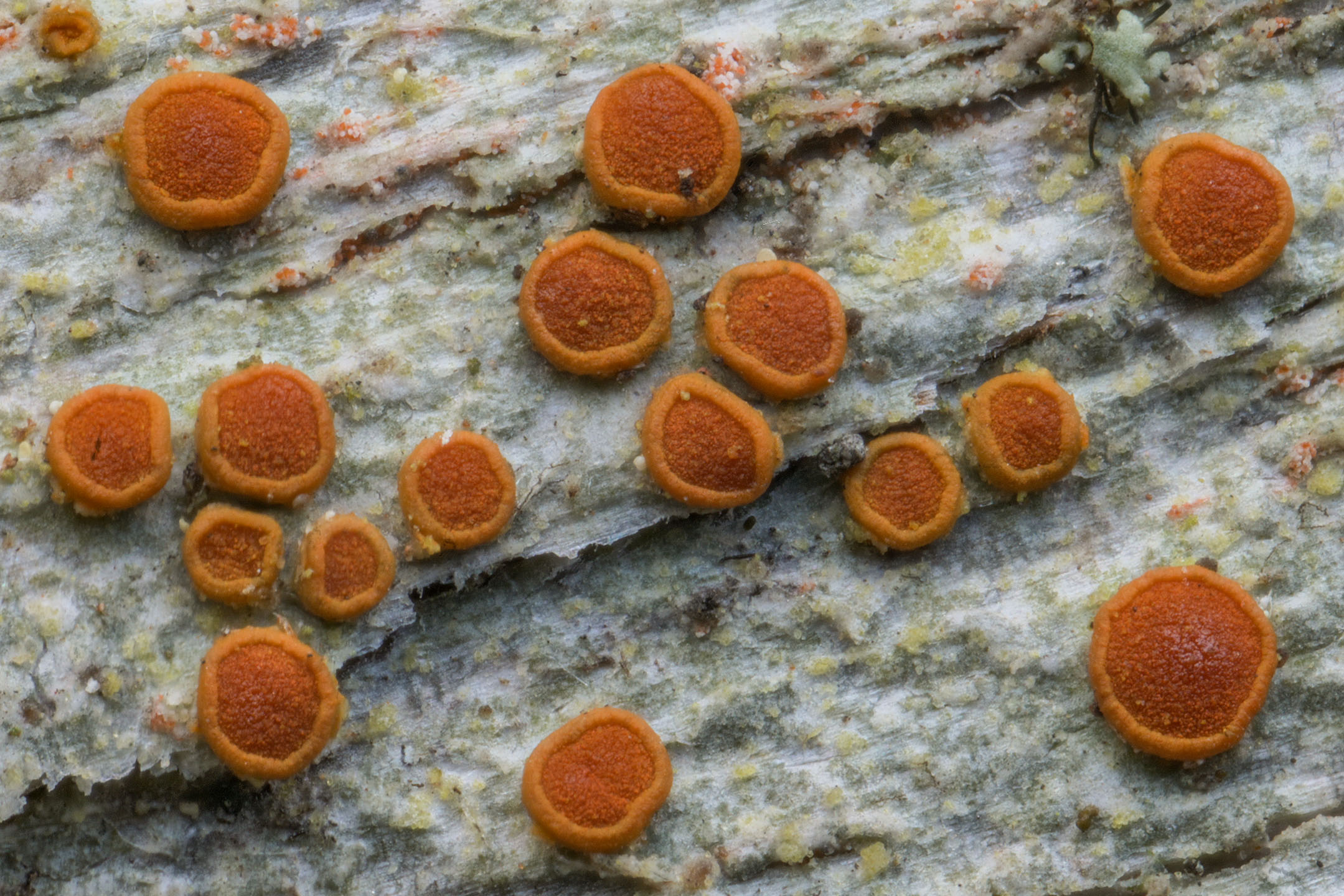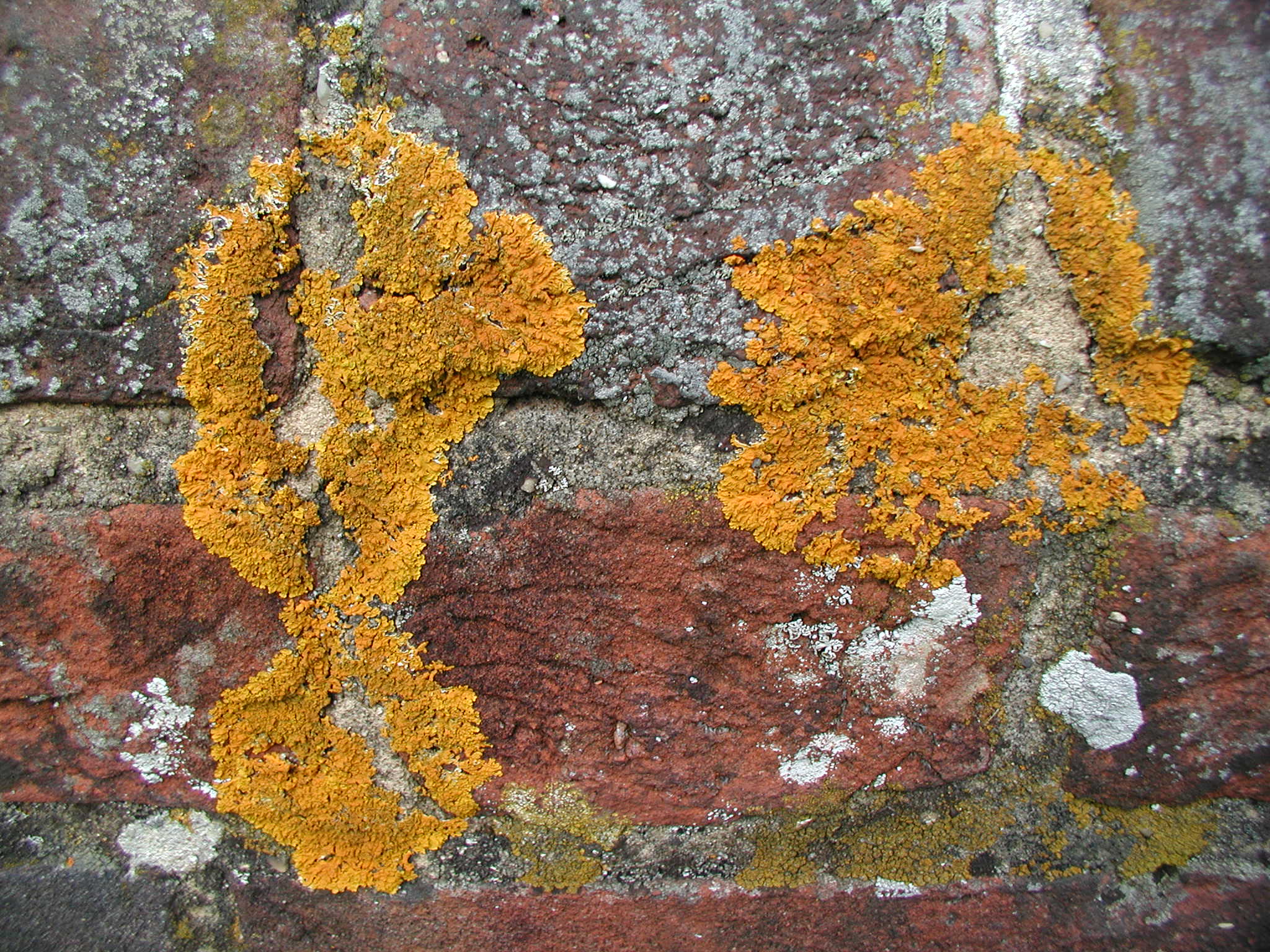|
Sanguineodiscus
''Sanguineodiscus'' is a genus of lichen-forming fungi in the family Teloschistaceae. It is characterized by its deep red apothecial , found predominantly in the Mediterranean basin, Central Asia, Northern Africa, and Europe. This genus comprises both saxicolous (growing on rocks) and corticolous (growing on tree bark) species, which are found in various habitats, such as inland rain-sheltered base-rich siliceous rocks, seashore siliceous rocks, and calcareous outcrops in Central Asia. ''Sanguineodiscus'', established in 2023, contains four recognized species, but it is believed that the genus contains more unnamed taxa. Taxonomy The genus ''Sanguineodiscus'' was circumscribed by Ivan Valerievich Frolov and Jan Vondrák in 2020. The type species is ''Sanguineodiscus viridirufus''. The name of the genus is derived from the Latin word ''sanguineous'' ("deep red"), which refers to the colour of the apothecial . Description ''Sanguineodiscus'' species have crustose, or thalli, w ... [...More Info...] [...Related Items...] OR: [Wikipedia] [Google] [Baidu] |
Teloschistaceae
The Teloschistaceae are a large family (biology), family of mostly lichen-forming fungi belonging to the class (taxonomy), class Lecanoromycetes in the division (botany), division Ascomycota. The family has a cosmopolitan distribution, although its members occur predominantly in temperate climate, temperate regions. Most members are lichens that either saxicolous lichen, live on rock or corticolous lichen, on bark, but about 40 species are lichenicolous fungus, lichenicolousmeaning they are non-lichenised fungi that live on other lichens. Many members of the Teloschistaceae are readily identifiable by their vibrant orange to yellow hue, a result of their frequent anthraquinone content. The presence of these anthraquinone biological pigment, pigments, which confer protection from ultraviolet light, enabled this group to expand from shaded forest habitats to harsher environmental conditions of sunny and arid ecosystems during the Late Cretaceous. Teloschistaceae lichens typically ... [...More Info...] [...Related Items...] OR: [Wikipedia] [Google] [Baidu] |
Crustose Lichen
Crustose lichens are lichens that form a crust which strongly adheres to the Substrate (biology), substrate (soil, rock, tree bark, etc.), making separation from the substrate impossible without destruction. The basic structure of crustose lichens consists of a cortex (botany), cortex layer, an algal layer, and a medulla. The upper cortex layer is differentiated and is usually pigmented. The algal layer lies beneath the cortex. The medulla fastens the lichen to the substrate and is made up of Fungus, fungal hyphae. The surface of crustose lichens is characterized by branching cracks that periodically close in response to climatic variations such as alternate wetting and drying regimes. Subtypes * Powdery – considered as the simplest subtype due to the absence of an organized thallus. :The thallus appears powdery. :E.g. Genera ''Lepraria'', ''Vezdaea'' * Endolithic – grows inside the rock, usually in interstitial spaces between mineral grains. The :upper cortex is usually d ... [...More Info...] [...Related Items...] OR: [Wikipedia] [Google] [Baidu] |
Taxa Described In 2010
In biology, a taxon (back-formation from ''taxonomy''; : taxa) is a group of one or more populations of an organism or organisms seen by taxonomists to form a unit. Although neither is required, a taxon is usually known by a particular name and given a particular ranking, especially if and when it is accepted or becomes established. It is very common, however, for taxonomists to remain at odds over what belongs to a taxon and the criteria used for inclusion, especially in the context of rank-based (" Linnaean") nomenclature (much less so under phylogenetic nomenclature). If a taxon is given a formal scientific name, its use is then governed by one of the nomenclature codes specifying which scientific name is correct for a particular grouping. Initial attempts at classifying and ordering organisms (plants and animals) were presumably set forth in prehistoric times by hunter-gatherers, as suggested by the fairly sophisticated folk taxonomies. Much later, Aristotle, and later still ... [...More Info...] [...Related Items...] OR: [Wikipedia] [Google] [Baidu] |
Teloschistales
The Teloschistales are an order of mostly lichen-forming fungi belonging to the class Lecanoromycetes in the division Ascomycota. According to one 2008 estimate, the order contains 5 families, 66 genera, and 1954 species. The predominant photobiont partners for the Teloschistales are green algae from the genera ''Trebouxia'' and ''Asterochloris''. Molecular phylogenetics The higher-level phylogenetic relationships of the Teloschistales and other members of the two major subclasses of Lecanoromycetes, Lecanoromycetidae and Ostropomycetidae, were clarified in a 2018 publication by Kraichak and colleagues. In the Teloschistales, the family Teloschistaceae has a sister taxon relationship with Megalosporaceae, and the clade In biology, a clade (), also known as a Monophyly, monophyletic group or natural group, is a group of organisms that is composed of a common ancestor and all of its descendants. Clades are the fundamental unit of cladistics, a modern approach t ... containi ... [...More Info...] [...Related Items...] OR: [Wikipedia] [Google] [Baidu] |
Macaronesia
Macaronesia (; ) is a collection of four volcanic archipelagos in the Atlantic Ocean#North Atlantic, North Atlantic Ocean, off the coast of North Africa and Europe. Each archipelago is made up of a number of list of islands in the Atlantic Ocean, Atlantic oceanic islands, which were formed by seamounts on the ocean floor whose peaks have risen above the ocean's surface. Each of the archipelagos is a distinct political entity: the Azores and Madeira are Autonomous Regions of Portugal, autonomous regions of Portugal, the Canary Islands is an autonomous communities of Spain, autonomous community of Spain, while Cape Verde is a sovereign state and member states of the United Nations, member of the United Nations. Politically, the islands belonging to Portugal and Spain are parts of the European Union, while Cape Verde is a member of the African Union. Geologically, most of Macaronesia is part of the African Plate, African tectonic plate. The Azores are located in the Azores triple ... [...More Info...] [...Related Items...] OR: [Wikipedia] [Google] [Baidu] |
Coniferous
Conifers () are a group of conifer cone, cone-bearing Spermatophyte, seed plants, a subset of gymnosperms. Scientifically, they make up the phylum, division Pinophyta (), also known as Coniferophyta () or Coniferae. The division contains a single extant class (biology), class, Pinopsida. All Neontology, extant conifers are perennial plant, perennial woody plants with secondary growth. The majority are trees, though a few are shrubs. Examples include Cedrus, cedars, Pseudotsuga, Douglas-firs, Cupressaceae, cypresses, firs, junipers, Agathis, kauri, larches, pines, Tsuga, hemlocks, Sequoioideae, redwoods, spruces, and Taxaceae, yews.Campbell, Reece, "Phylum Coniferophyta". ''Biology''. 7th ed. 2005. Print. p. 595. As of 2002, Pinophyta contained seven families, 60 to 65 genera, and more than 600 living species. Although the total number of species is relatively small, conifers are ecology, ecologically important. They are the dominant plants over large areas of land, most notably ... [...More Info...] [...Related Items...] OR: [Wikipedia] [Google] [Baidu] |
Deciduous
In the fields of horticulture and botany, the term deciduous () means "falling off at maturity" and "tending to fall off", in reference to trees and shrubs that seasonally shed Leaf, leaves, usually in the autumn; to the shedding of petals, after flowering; and to the shedding of ripe fruit. The antonym of deciduous in the botanical sense is evergreen. Generally, the term "deciduous" means "the dropping of a part that is no longer needed or useful" and the "falling away after its purpose is finished". In plants, it is the result of natural processes. "Deciduous" has a similar meaning when referring to animal parts, such as deciduous antlers in deer, deciduous teeth (baby teeth) in some mammals (including humans); or decidua, the uterine lining that sheds off after birth. Botany In botany and horticulture, deciduous plants, including trees, shrubs and herbaceous perennials, are those that lose all of their Leaf, leaves for part of the year. This process is called abscission. I ... [...More Info...] [...Related Items...] OR: [Wikipedia] [Google] [Baidu] |
Siliceous Rock
Siliceous rocks are sedimentary rocks that have silica (SiO2) as the principal constituent. The most common siliceous rock is chert; other types include diatomite. They commonly form from silica-secreting organisms such as radiolarians, diatoms, or some types of sponges Sponges or sea sponges are primarily marine invertebrates of the animal phylum Porifera (; meaning 'pore bearer'), a basal clade and a sister taxon of the diploblasts. They are sessile filter feeders that are bound to the seabed, and ar .... References Sedimentary rocks {{sedimentary-rock-stub ... [...More Info...] [...Related Items...] OR: [Wikipedia] [Google] [Baidu] |


